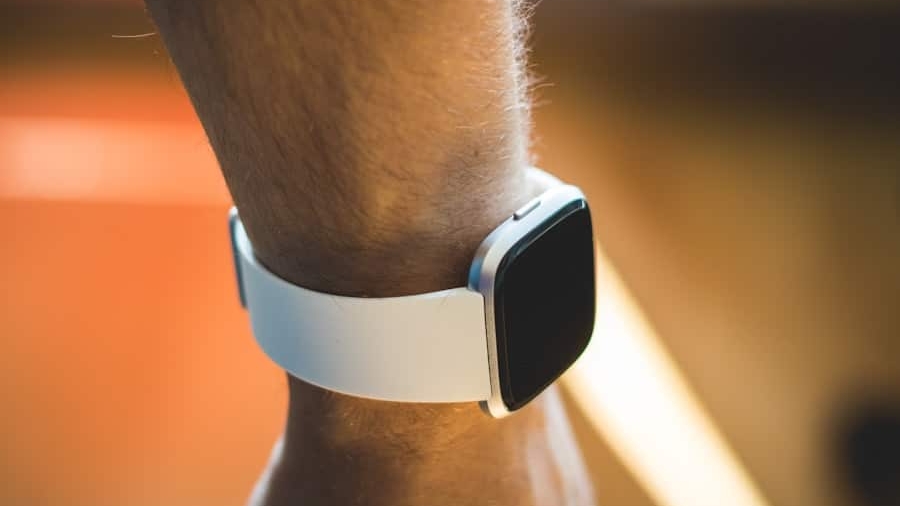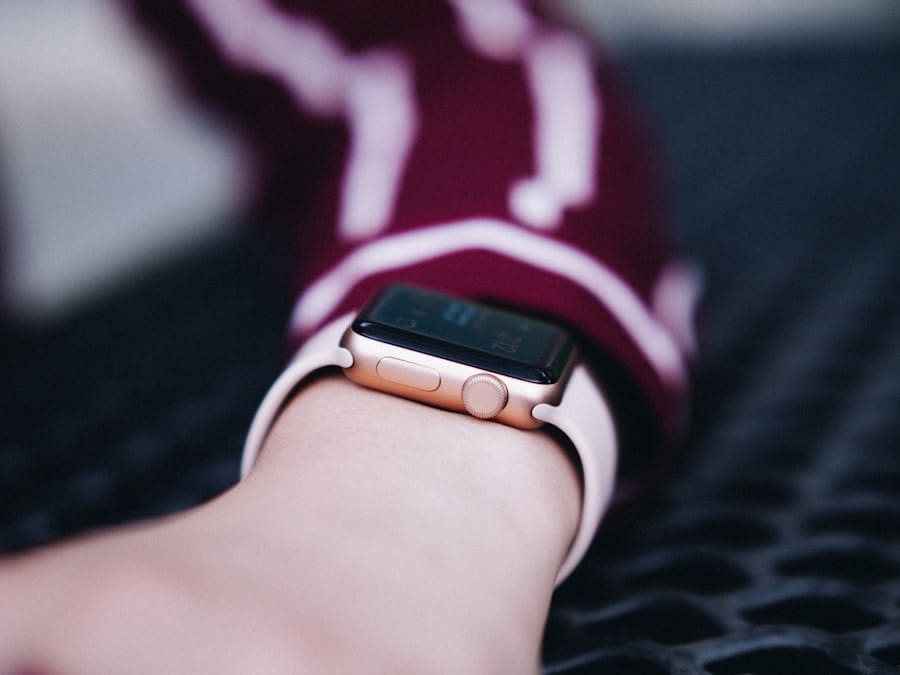Wearable technology has emerged as a transformative force in the realm of health and fitness, revolutionizing how individuals monitor their well-being and engage with their health data. This category of technology encompasses a wide array of devices, including smartwatches, fitness trackers, smart clothing, and even advanced medical devices that can be worn on the body. The primary allure of wearable tech lies in its ability to provide real-time feedback and insights into various health metrics, such as heart rate, sleep patterns, physical activity levels, and more.
As these devices become increasingly sophisticated, they are not only enhancing personal health management but also contributing to broader public health initiatives. The proliferation of wearable technology can be attributed to several factors, including advancements in sensor technology, miniaturization of components, and the growing consumer demand for health-related products. The integration of artificial intelligence and machine learning algorithms into these devices has further enhanced their capabilities, allowing for more accurate data interpretation and personalized recommendations.
As a result, wearable tech is not merely a trend; it represents a significant shift in how individuals approach their health and wellness, empowering them to take proactive steps toward better health outcomes.
Key Takeaways
- Wearable tech refers to devices that can be worn on the body to track and monitor various health and fitness metrics.
- Wearable tech provides personalized health insights by collecting and analyzing data such as heart rate, sleep patterns, and physical activity.
- Data collection and analysis play a crucial role in wearable tech, as they enable the generation of personalized health insights for individuals.
- Personalized health insights from wearable tech can help in disease prevention by identifying early warning signs and encouraging healthy behaviors.
- Wearable tech is also widely used for fitness tracking, helping individuals monitor their exercise routines and set achievable fitness goals.
The Impact of Wearable Tech on Personalized Health Insights
Wearable technology has fundamentally altered the landscape of personalized health insights by enabling users to track and analyze their health data in unprecedented ways. For instance, devices like the Apple Watch or Fitbit provide users with continuous heart rate monitoring, sleep tracking, and activity logging, which can be invaluable for understanding individual health patterns.
The immediacy of this feedback fosters a greater awareness of one’s health status and encourages users to make informed decisions about their daily routines. Moreover, the personalization aspect of wearable tech extends beyond mere data collection; it encompasses tailored recommendations based on individual metrics. For example, some devices utilize algorithms that analyze a user’s activity levels and suggest specific workouts or rest periods to optimize performance and recovery.
This level of customization is particularly beneficial for individuals with specific health goals, such as weight loss or muscle gain, as it provides actionable insights that are directly relevant to their unique circumstances. By harnessing the power of data analytics, wearable tech is transforming the way individuals engage with their health, making it more personalized and actionable.
The Role of Data Collection and Analysis in Wearable Tech
At the heart of wearable technology lies the intricate process of data collection and analysis. These devices are equipped with an array of sensors that continuously gather data on various physiological parameters. For instance, accelerometers track movement patterns, gyroscopes measure orientation, and heart rate monitors provide insights into cardiovascular health.
This wealth of data is then transmitted to connected applications or cloud-based platforms where sophisticated algorithms analyze it to generate meaningful insights. The ability to collect vast amounts of data in real-time is what sets wearable tech apart from traditional health monitoring methods. The analysis of this data is equally crucial; it transforms raw numbers into actionable insights that users can understand and utilize.
Advanced machine learning techniques are often employed to identify patterns and correlations within the data. For example, a wearable device might analyze a user’s activity levels alongside their sleep quality to determine how exercise impacts restfulness. Such insights can lead to significant lifestyle changes, as users become more aware of how their daily habits influence their overall health.
Furthermore, the aggregation of data from multiple users can contribute to larger-scale health studies, providing researchers with valuable information about population health trends.
Personalized Health Insights and Disease Prevention
The integration of personalized health insights derived from wearable technology plays a pivotal role in disease prevention strategies. By continuously monitoring key health indicators, these devices can alert users to potential health issues before they escalate into serious conditions. For instance, irregular heart rate patterns detected by a smartwatch may prompt an individual to seek medical advice, potentially leading to early diagnosis of cardiovascular issues.
This proactive approach to health management is particularly significant in an era where chronic diseases are on the rise. Additionally, wearable tech can facilitate lifestyle modifications that contribute to disease prevention. For example, individuals at risk for diabetes can use glucose monitoring devices that provide real-time feedback on blood sugar levels in response to dietary choices and physical activity.
By understanding how their bodies react to different foods and exercise regimens, users can make informed decisions that help mitigate their risk factors. This personalized feedback loop not only empowers individuals but also fosters a culture of preventive healthcare that prioritizes wellness over reactive treatment.
Wearable Tech and Fitness Tracking
Fitness tracking is one of the most popular applications of wearable technology, appealing to a broad audience ranging from casual exercisers to elite athletes. Devices such as fitness bands and smartwatches offer features that allow users to monitor their workouts meticulously. Metrics such as steps taken, calories burned, distance traveled, and active minutes are readily available at users’ fingertips.
This level of detail encourages accountability and motivation, as individuals can set specific fitness goals and track their progress over time. Moreover, many fitness trackers now incorporate social features that enable users to connect with friends or join challenges, fostering a sense of community around fitness goals. This social aspect can significantly enhance motivation; for instance, competing with friends on step counts or workout frequency can drive individuals to push themselves further than they might alone.
Additionally, some devices offer guided workouts or coaching features that adapt based on user performance, providing a personalized training experience that can lead to improved fitness outcomes.
Wearable Tech and Chronic Disease Management
Wearable technology has also made significant strides in the management of chronic diseases, offering patients tools that enhance their ability to monitor and control their conditions effectively. For individuals with diabetes, continuous glucose monitors (CGMs) provide real-time data on blood sugar levels, allowing for immediate adjustments in diet or insulin administration. This constant feedback loop is crucial for maintaining optimal blood sugar control and preventing complications associated with diabetes.
Similarly, wearable devices are being utilized in managing cardiovascular diseases by monitoring heart rate variability and detecting arrhythmias. For example, devices like the Apple Watch have been credited with identifying atrial fibrillation in users who were previously unaware of their condition. By alerting users to irregular heart rhythms, these devices empower patients to seek timely medical intervention, potentially reducing the risk of stroke or other serious complications.
The ability to track vital signs continuously not only enhances patient engagement but also provides healthcare providers with valuable data that can inform treatment plans.
The Future of Wearable Tech in Personalized Health Insights
As technology continues to evolve at a rapid pace, the future of wearable tech in personalized health insights appears promising. Innovations such as advanced biometric sensors capable of measuring additional physiological parameters—like hydration levels or stress hormones—are on the horizon. These developments could further enrich the data available for analysis and provide even deeper insights into individual health profiles.
Moreover, the integration of artificial intelligence will likely play a crucial role in enhancing the capabilities of wearable devices. Future wearables may not only track metrics but also predict potential health issues based on historical data trends and user behavior patterns. For instance, an AI-driven device could analyze a user’s activity levels alongside environmental factors—such as air quality or weather conditions—to offer tailored advice on outdoor exercise or suggest alternative indoor workouts when conditions are unfavorable.
This level of personalization could significantly enhance user experience and adherence to health recommendations.
Ethical Considerations in Wearable Tech for Personalized Health Insights
While the benefits of wearable technology in providing personalized health insights are substantial, ethical considerations must be addressed as well. One primary concern revolves around data privacy and security; wearable devices collect sensitive personal information that could be vulnerable to breaches or misuse. Users must be assured that their data is protected and used responsibly by manufacturers and third-party applications.
Additionally, there is the issue of equity in access to wearable technology. As these devices become more integral to health management, disparities may arise between those who can afford advanced wearables and those who cannot. This digital divide could exacerbate existing health inequalities if only certain populations benefit from the advancements in personalized health insights offered by these technologies.
It is essential for stakeholders—including policymakers, healthcare providers, and technology developers—to work collaboratively to ensure that the advantages of wearable tech are accessible to all individuals regardless of socioeconomic status. In conclusion, while wearable technology holds immense potential for enhancing personalized health insights and improving overall well-being, it is imperative that ethical considerations guide its development and implementation. By addressing these challenges proactively, we can harness the full power of wearable tech while ensuring that it serves as a tool for equitable health empowerment across diverse populations.
If you’re interested in wearable technology for health, you may also want to check out TheNextWeb Brings Insights to the World of Technology. This article explores how technology is shaping our world and providing valuable insights into various industries, including healthcare.
FAQs
What is wearable tech?
Wearable tech refers to electronic devices that can be worn on the body, such as smartwatches, fitness trackers, and other devices that are designed to collect data and provide information about the user’s health and fitness.
How does wearable tech enable personalized health insights?
Wearable tech enables personalized health insights by continuously monitoring the user’s activity, heart rate, sleep patterns, and other health-related data. This data is then analyzed to provide personalized recommendations and insights to help the user improve their health and fitness.
What are some examples of wearable tech that enable personalized health insights?
Examples of wearable tech that enable personalized health insights include smartwatches with built-in heart rate monitors, fitness trackers that track activity levels and sleep patterns, and smart clothing with embedded sensors that monitor posture and movement.
How can personalized health insights from wearable tech benefit the user?
Personalized health insights from wearable tech can benefit the user by providing them with a better understanding of their health and fitness, helping them set and achieve personalized health goals, and alerting them to potential health issues or risks.
Are there any privacy concerns associated with wearable tech and personalized health insights?
There are potential privacy concerns associated with wearable tech and personalized health insights, as the data collected by these devices could be sensitive and personal. It’s important for users to be aware of how their data is being used and to take steps to protect their privacy.



